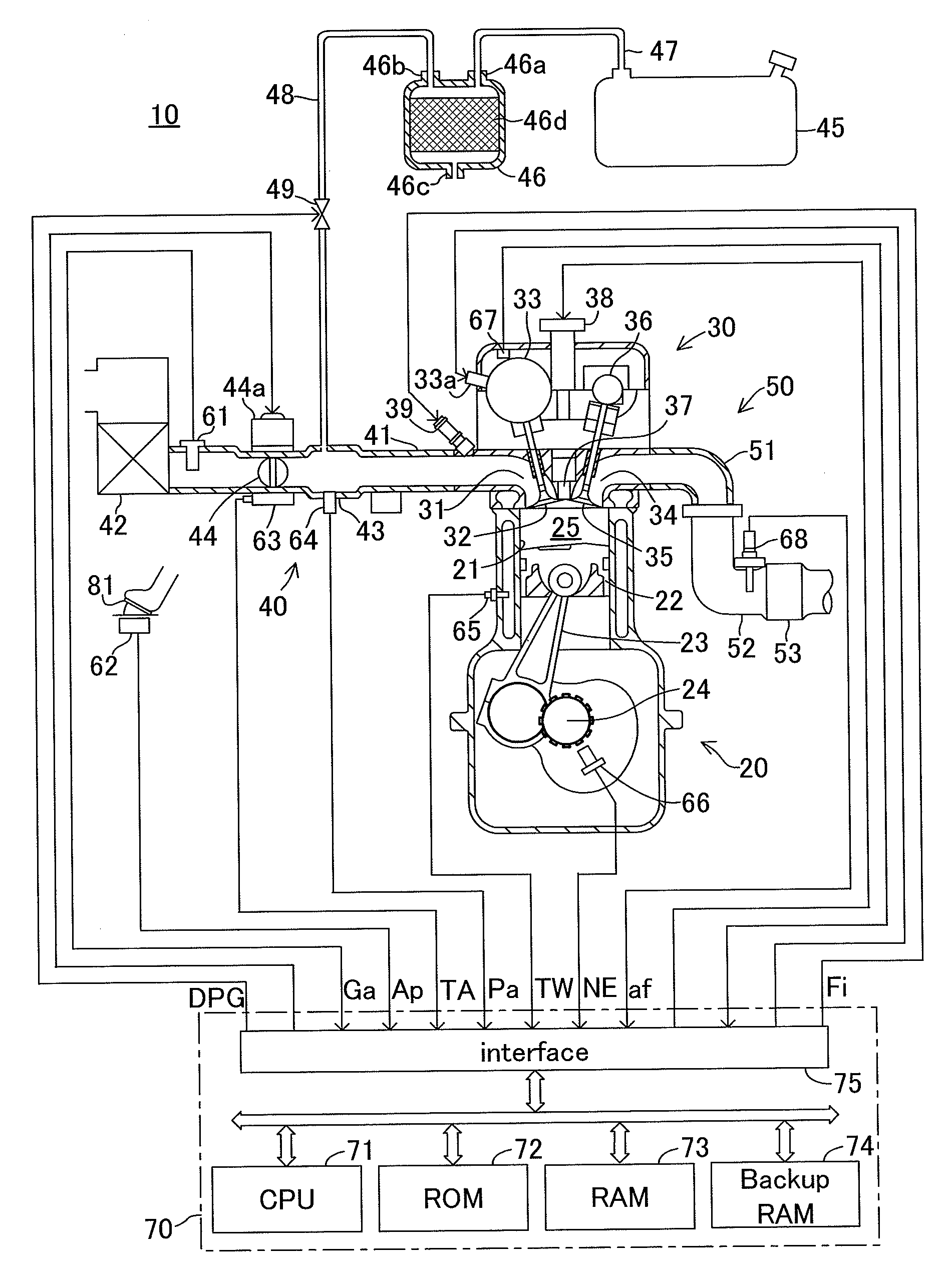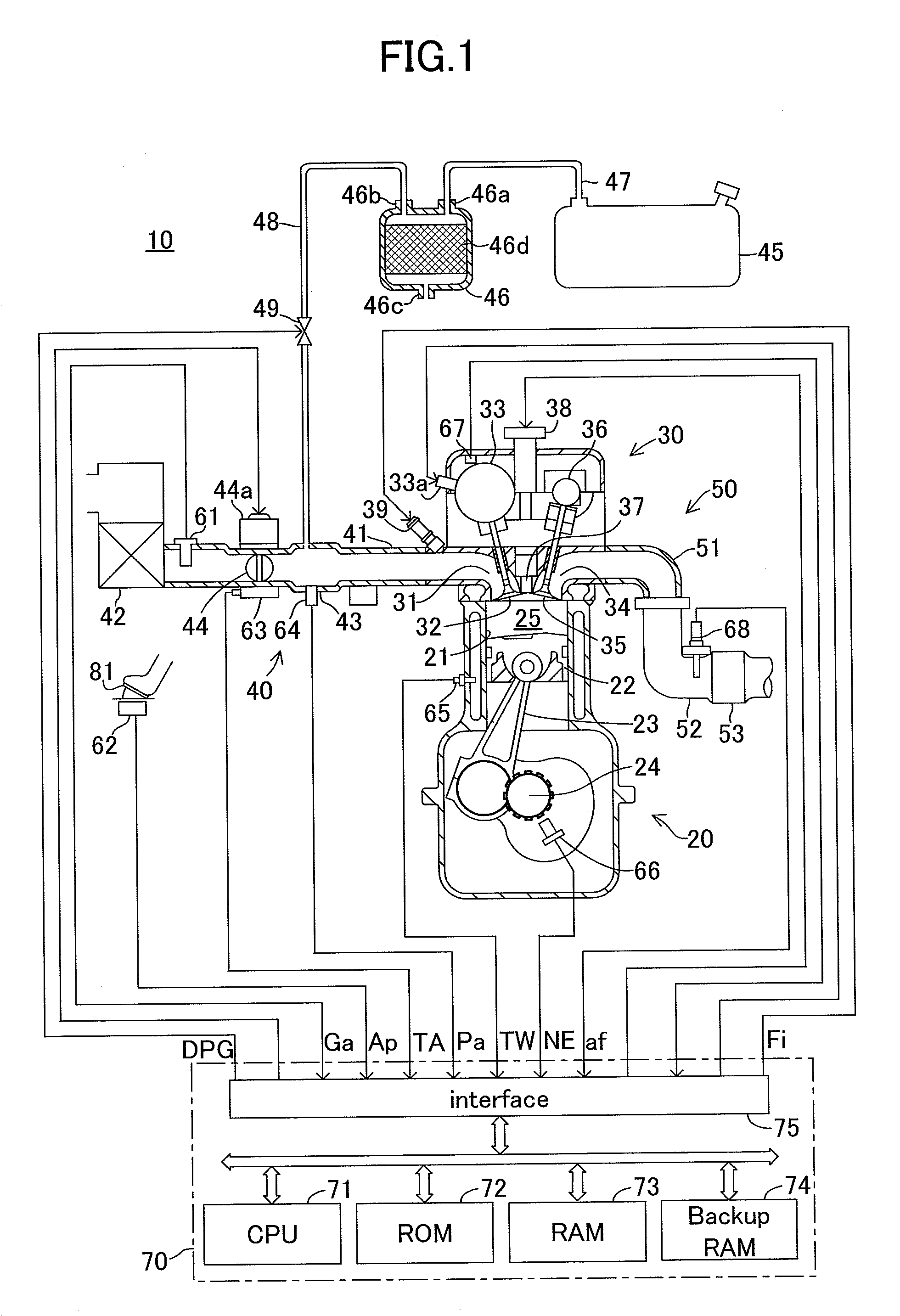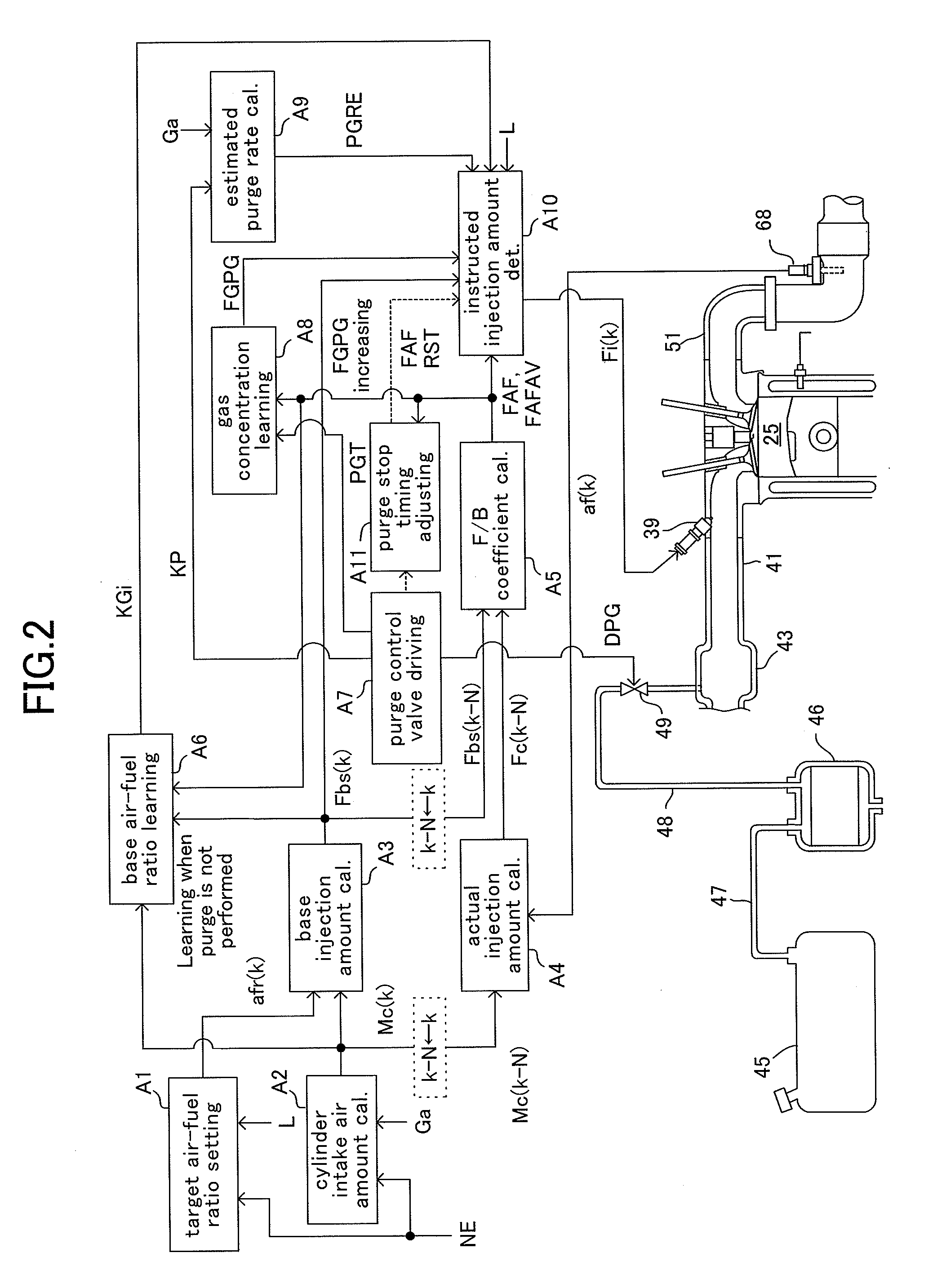Control apparatus for an internal combustion engine
a control apparatus and internal combustion engine technology, applied in the direction of electric control, combustion-air/fuel-air treatment, instruments, etc., can solve the problem of worsening emissions, and achieve the effect of suppressing the fluctuation of air-fuel ratio and time constant of filtering processing
- Summary
- Abstract
- Description
- Claims
- Application Information
AI Technical Summary
Benefits of technology
Problems solved by technology
Method used
Image
Examples
first embodiment
a. First Embodiment
[0090]FIG. 1 shows a schematic configuration of a system in which a control apparatus according to a first embodiment of the present invention is applied to an internal combustion engine 10. The engine 10 is a four-stroke, in-line four cylinder engine. FIG. 1 shows a section of a specific cylinder only, but other cylinders also have a similar configuration.
[0091]The engine 10 includes a cylinder block section 20 including a cylinder block, a cylinder block lower-case, and an oil pan; a cylinder head section 30 fixed on the cylinder block section 20; an intake system 40 for supplying air (fresh air) to the cylinder block section 20; and an exhaust system 50 for discharging exhaust gas from the cylinder block section 20 to the exterior of the engine.
[0092]The cylinder block section 20 includes a cylindrical cylinder 21, a piston 22, a connecting rod 23, and a crankshaft 24. The piston 22 reciprocates within the cylinder 21. The reciprocating motion of the piston 22 ...
second embodiment
b. Second Embodiment
[0229]Next will be described a second embodiment of a control apparatus for the internal combustion engine in accordance with the present invention. The control apparatus according to the second embodiment is different from the control apparatus according to the first embodiment only in that its CPU 71 executes a purge stop timing adjusting routine shown in FIG. 12, instead of the purge stop timing adjusting routine shown in FIG. 11 which the CPU 71 of the first embodiment executes. Hereinafter, the description is made by focusing on this difference. Note that Steps shown in FIG. 12 identical to Steps shown in FIG. 11 have the same numerals as ones shown in FIG. 11.
[0230]The second embodiment, if the base air-fuel ratio learning is not completed when the purge control valve closing instruction timing arrives, prohibits correcting the feedback correction coefficient FAF to the base value “1” at the purge control valve closing instruction timing and correcting the ...
third embodiment
c. Third Embodiment
[0237]Next will be described a third embodiment of a control apparatus for the internal combustion engine in accordance with the present invention. The control apparatus according to the third embodiment is different from the control apparatus according to the first embodiment only in that its CPU 71 executes a purge stop timing adjusting routine shown in FIG. 13, instead of the purge stop timing adjusting routine shown in FIG. 11 which the CPU 71 of the first embodiment executes. Hereinafter, the description is made by focusing on this difference. Note that Steps shown in FIG. 13 identical to Steps shown in FIG. 11 have the same numerals as ones shown in FIG. 11.
[0238]The control apparatus according to the third embodiment determines a partition ratio (i.e., taking-in-ratio) RFAF based on the operation state parameter of the engine 10, if it is determined that the base air-fuel ratio learning has not been completed when the purge control valve closing instruction...
PUM
 Login to View More
Login to View More Abstract
Description
Claims
Application Information
 Login to View More
Login to View More - R&D
- Intellectual Property
- Life Sciences
- Materials
- Tech Scout
- Unparalleled Data Quality
- Higher Quality Content
- 60% Fewer Hallucinations
Browse by: Latest US Patents, China's latest patents, Technical Efficacy Thesaurus, Application Domain, Technology Topic, Popular Technical Reports.
© 2025 PatSnap. All rights reserved.Legal|Privacy policy|Modern Slavery Act Transparency Statement|Sitemap|About US| Contact US: help@patsnap.com



